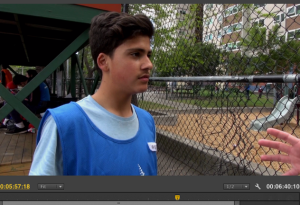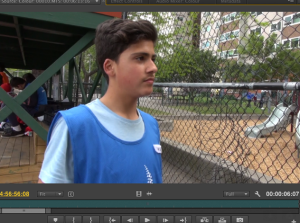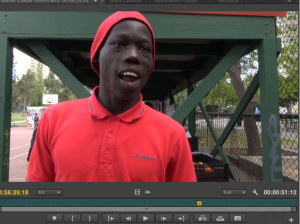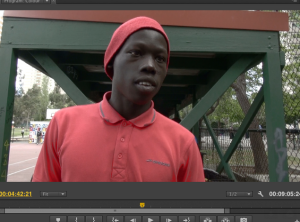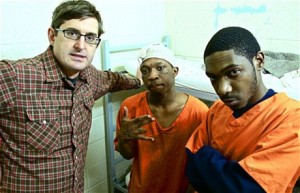The audio utilized and applied in the excerpt provided from Anna Broinowski’s 2007 exploratory documentary titled Forbidden Lies, features a music track, sound effects, sounds recorded with a boom and a mixer whist capturing the footage along with additional sounds that were potentially recorded and applied to the documentary. The film also comprises of editing techniques, such as an audio lead or in editing terms, a ‘J cut’, layering audio tracks as well as muting audio footage to enhance the sound that is layered over the footage.
The first scene shown in the excerpt has applied non-diegetic sound, making the scene feel like a bit of a dreamscape (perhaps how Broinowski feel’s about the book under question). To assist this approach, a music track plays across the footage while the original sound of the footage has been muted. The sound affects of birds chirping occur as well as a dazzling sound, which is combined with a swirl transition into the next scene. The sound affects are nothing particularly fancy and could most likely be sourced online and are often available for free from sound affects websites.
Particular sounds have been recorded perhaps with a zoom recorder or sourced from established sound affects to draw attention to elements within the documentary that assist the narrative. These sounds are applied to be focal sounds and are used for the instances of car wheels on a dirt road, a burka being thrown and taken away by the wind and footsteps trekking through a windy desert.

Screen shot taken from Forbidden Lies
The editing techniques employed and sourced for the documentary perhaps draw the audience’s attention to the fantastical nature of Forbidden Lies as well as take the audience back into reality. At the end of the opening scene, a woman is walking through a windy desert when the sound of Broinowski slamming the subject’s book down on a table is layered with the footage. The sound of the book being slammed is immediately followed by a sound affect of what appears to be sand being broken down (or maybe foreseeing what is to ecome of the subject in question). There are a couple of ways to achieve this in the editing process, however the most logical way that I can think of is applying a J cut, layering the sound affect and lowering the J track’s volume to allow for the sound affect to be of focus. A J cut is often used as an editing tactic to assist with the transitions between scenes however in this instance, the sound of a book slamming as well as the chosen sound affect grabs the viewers attention and perhaps snaps them out of the dream-like introduction and into the theme of the documentary.
